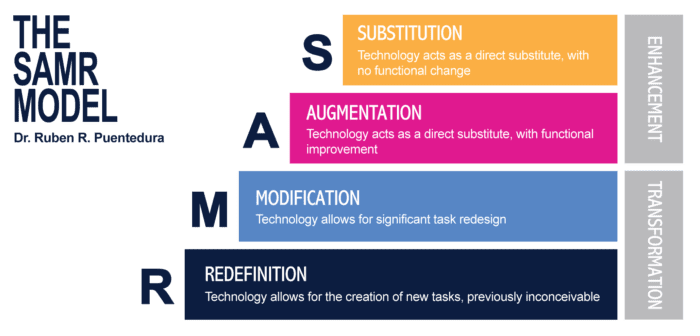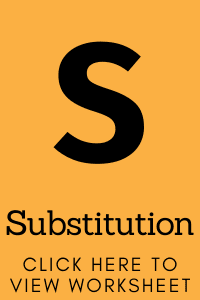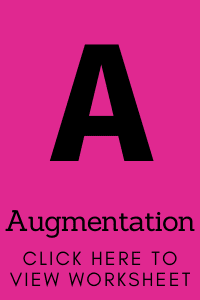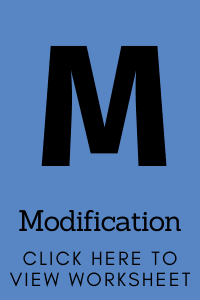Are you looking for the Classworks Special Education program from TouchMath? Click here to go to their site.
Are you looking for the Classworks Special Education program from TouchMath? Click here to go to their site.
Technology has shifted from a luxury to a need in the modern learning environment. Making the appropriate use of edtech has now become an important teaching skill. The SAMR model can help teachers with this.
The SAMR model is a framework for evaluating instructional technology usage. SAMR is an acronym representing the four ways to apply technology to classroom activities – substitution, augmentation, modification, and redefinition. The SAMR Model can help you determine an app’s appropriateness when using technology in the classroom. The SAMR Model focuses on determining whether the technology fits the instructional goals of a learning task.

Technology integration in the classroom is certainly not new. 1:1 integration in schools, known as the “digital conversion,” really gained steam with the strategic plan of Mooresville Graded School District (MGSD) in 2006. They looked at the direction technology was headed, its potential impact on education, and decided that technology tools were going to be as relevant to every student as a notebook and pencil.
MGSD developed the motto: “every child, every day.” According to the U.S. Department of education, “this motto supports all students to being successful and responsible citizens in a global workplace and community.” Appropriate use of technology fosters future success that continues far beyond the classroom.
Beyond the use of technology in academics, these skills are necessary within the 21st century workforce. Basic word processing to advanced coding have become essential skills across every industry. Even fast food companies such as McDonalds have apps for ordering, and farmers are using drone technology to survey land, crops, and animals.
So how do we take a century of pedagogical study in effective instruction and learning, and incorporate technology into practice in such a way that it enhances and even redefines the learning?
To start, it’s important to understand that not every lesson calls for the same level of technology integration. There are some learning activities that simply need basic recall to spur academic growth.
Just like not every lesson has a Depth of Knowledge (DOK) level of 4, which would represent the creation of new ideas independently and high levels of critical thinking, not every lesson requires a deep integration of technology tools. This is why SAMR continues to be a successful model for technology use in the learning environment.

SAMR is a framework for evaluating instructional technology usage that includes four levels of technology integration.
These levels include Substitution, Augmentation, Modification, and Redefinition.
Rather than thinking of these levels as a ladder, they really are more of a spectrum.
Just like our DOK levels, not every lesson is most effective at the Redefinition level of technology integration. There are moments when Substitution is the right mode, and other moments when Augmentation or Modification is called for.

Substitution is just what it sounds like. It represents substituting the same activity you would do in the analog (or paper and pencil) realm in a digital realm.
Instead of students filling out the answers on a paper worksheet, they are typing their answers into an online worksheet. Substitution does not change or modify the lesson’s original intent. It simply allows the activity to be done in a digital environment.
How does substitution impact learning?
Even simple substitution can have a major impact on teaching and learning. As we all experienced in 2020 and 2021, there are times where students must learn remotely.
Substitution allows students to continue the same work they would do in a classroom seat at home on the family computer. It can also provide additional supports for some students without additional modifications.
We all were placed in situations this year where we had to design and develop learning structures in an online environment due to COVID closures. Districts with very little experience in online learning had difficulty with this process, and often relied on canned curriculum programs to quickly adapt.
SAMR allows a framework where these schools could have looked at starting with basic substitution of their current learning assets, and gradually applying the SAMR framework as continued training and comfort in technology use for both teachers and students developed.
Just the ability for some students to type can be a learning support. Many students with deficiencies in fine motor skills, especially at the elementary level, can be more successful in typing responses, or even using basic speech to text tools now included in programs such as Google Docs and Microsoft Word.
This allows the student to not only continue to learn in a remote environment, but to be more successful by having tools that help them overcome specific learning barriers.
Substitution, as seen by clicking on the “S” image, is taking an activity done on paper and adapting it for an online experience. (You will have to login to TeacherMade.) Here, the child is still completing the same learning activity of reading and identifying the main idea. This “substitution” to a digital environment allows the student to complete this online.
Here in Teachermade, this is done in minutes using open answer response boxes placed directly over the response lines on the paper. With the addition of text boxes for the Name at the top, we now have a full digital replication, or substitution, of the analog worksheet.
Teachermade eliminates the time-consuming struggle of trying to create worksheets in Word or Google Docs that are easy for students to interact with.

As seen in this example, I have taken an animal cell diagram and redesigned it for the digital environment. Using the TeacherMade short answer tool, I have simply covered up the correct response on the diagram with a blank for the students to complete the diagram on their own in a digital environment.
To further augment this activity and make it more user-friendly, I have added a drop down box example for one label. This feature allows you to give the student some answer choices, rather than open responses, allowing for differentiation or modification in a simpler way than in the brick and mortar classroom.
How does augmentation impact learning?
Augmentation uses the power of technology to enhance what can be done on paper in the classroom.
Augmentation can be used for students with an IEP (Individual Education Plan) accommodation. These can be easily implemented on a digital worksheet using TeacherMade. While this would be a more major adjustment on a paper worksheet, this can be easily done in a digital environment through the use of the TeacherMade tools.
Similarly, materials can be enhanced to differentiate for special populations including high-achieving or gifted students very easily and without having to create entirely new assignments or activities.

Here, students are now clicking to identify text evidence within the passage. Using the hotspot feature in TeacherMade, we were able to quickly highlight specific sentences that make them selectable by the student. The student can then select these to identify the text evidence needed for the modified questions.
This type of activity would not be possible in paper format and would require significantly more time and direction for students to achieve the same objectives. How does modification impact learning? These features allow for assignments and assessments to be modified for digital delivery, which opens up capabilities that are not possible in a hard-copy format.
Assignments with clear guidance and directions built-in, as in this example, maximize instructional time by cutting down the wasted minutes spent explaining the tasks, passing out materials, and answering questions about what students are expected to do.
The capability in TeacherMade to select correct responses with hotspots and short answer questions allows for responses to be autograded. Now we are not only redesigning the task, but we are adding efficiency to our work by having TeacherMade grade it for us!

https://app.classwork.com/s/g9qqEacUTOKLqt5JhxvkWw/
With these examples, we’ve added functionality and features that are not possible in a classroom setting without one-on-one interaction with the teacher. Through redefinition, all students can access that kind of instruction in any setting.
Here are some examples of functionality that we’ve added through redefinition:
How does redefinition impact learning?
Redefinition involves taking the most widely used tools in the classroom, such as worksheets, and adding technology to increase student interaction. Redefining the way that we have historically used worksheets re-engages the student and provides opportunities for additional support and scaffolding, as well as extension and differentiation.
Using the TeacherMade tools of audio recording and adding other multimedia components, we can transform the way we present, teach and learn these concepts both in the classroom and at home. These improvements will continue to enhance learning, even after students return to brick and mortar classrooms.
At this level, technology replaces traditional tools directly without changing the task fundamentally.
Technology enhances the task, providing some functional improvement over traditional methods.
Technology enables significant task redesign, allowing for new possibilities and activities that were not possible before.
Technology leads to the creation of entirely new tasks that were previously inconceivable without technology.
It’s important to note that the SAMR model encourages educators to strive for higher levels of Modification and Redefinition, as these levels promote deeper learning, critical thinking, and creativity. While Substitution and Augmentation provide valuable entry points, the ultimate goal is to leverage technology to transform teaching and learning experiences in ways that were not possible before.
TeacherMade makes it possible for teachers to seamlessly use the SAMR model in their classrooms. We help you transform your trusted resources into ready-made online assignments that enhance learning.
Sources: